NC Gov.’s DRIVE Task Force Unveils Plan to Recruit and Retain Teachers of Color
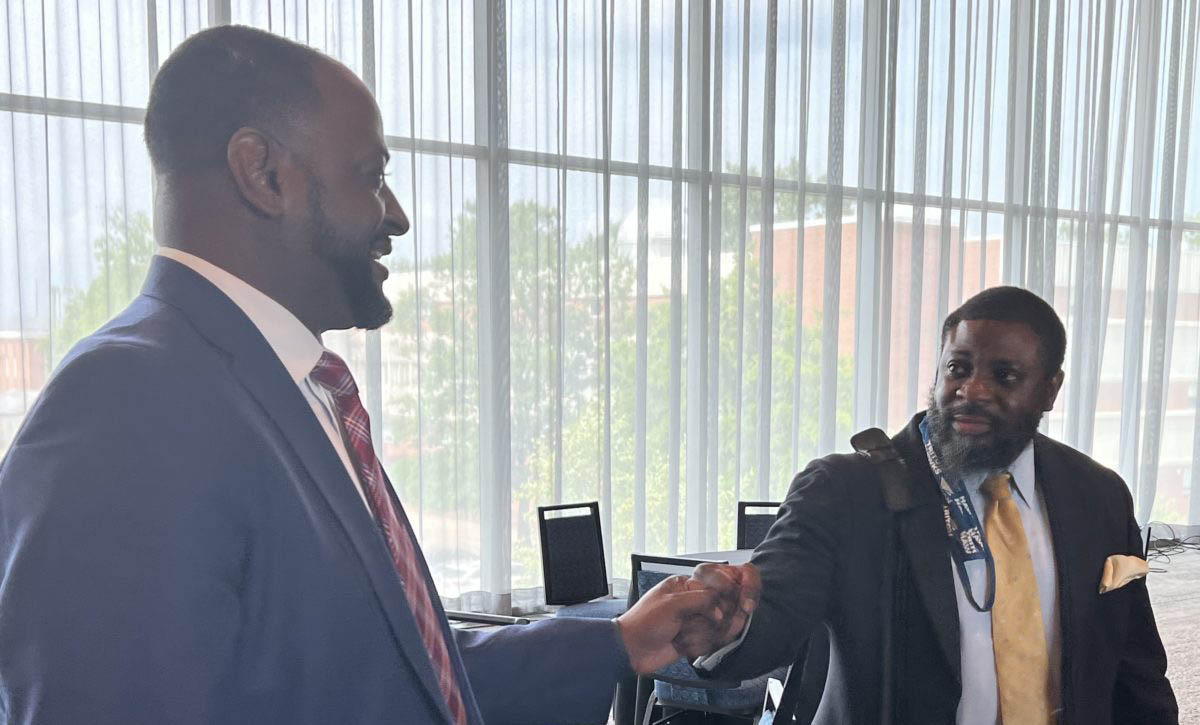
Get stories like this delivered straight to your inbox. Sign up for The 74 Newsletter
Gov. Roy Cooper’s Developing a Representative and Inclusive Vision for Education (DRIVE) Task Force officially launched its action plan for recruiting and retaining educators of color at the second-ever DRIVE Summit, held June 17, 2022 at North Carolina A&T State University.
The plan focuses on three phases of the teacher pipeline – recruiting and retaining teachers of color, while holding employers accountable for diversifying their teacher forces. Presenters throughout the day grounded these goals in a vast research base that says increasing the number of Black and Brown educators is better for all students.
What went unspoken was the reason it’s all necessary. The setting for the summit stood as a reminder of that.
As attendees discussed the action plan, four dormitories stood visible through the massive wall of windows in the main conference room. The dorms bear the names of the Greensboro Four, whose sit-ins challenged segregation. Inside, the topic was fixing a persisting wrong from desegregation – the removal of educators of color from the workforce.

In response to desegregation, an estimated 38,000 Black teachers across the South were fired and the number of Black teachers across the country decreased by 31.8%. In North Carolina, more than 3,000 Black teachers lost their jobs to white counterparts by 1972. The result was a majority white teacher workforce. As of 2019, 78% of teachers in the state were white, whereas 53% of students were nonwhite.
The DRIVE Task Force’s action plan is aimed at setting things right. Students spoke about the need for doing so. Three groups presented powerful ways of accomplishing the mission – including a focus on removing barriers. As the day came to a close, educators gathered in a room and wondered how to prepare for the backlash.
Students want teachers as diverse as them
The summit began with the voices of students who told attendees firsthand how the lack of diverse teachers in schools affects them.
“It can be really discouraging for a lot of students to walk into spaces where they don’t see themselves represented,” said Appalachian State University senior Christian Martin, who had his first teacher of color in seventh grade.
It’s not just seeing someone who looks like them; it’s seeing someone who behaves like them. Amaya Matthews, a senior at East Forsyth High School, saw her first educator of color in fifth grade. Then, she didn’t see another until high school.
“In elementary school is when it hit me the hardest,” she said, “because when you’re a little girl, you are copying everything that you see around you. All the adults are your influence. So for me, it (was) like I’m missing a part of the identity that I should have. … The term white-washed came upon me because I was copying what I was seeing.”
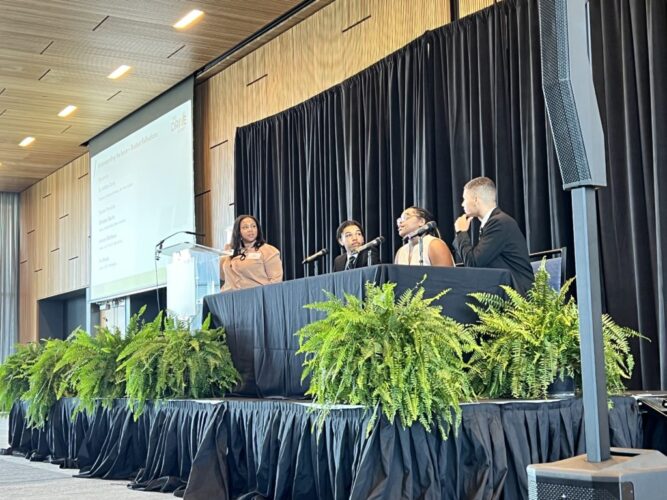
Teachers of color can inspire students of color even when they aren’t the same race, said Tre Woods, a Black student who never had a Black teacher. As a queer person, he notes that he’s never had a queer teacher, either. But he remembers his first teacher of color – a Latina educator when he was in fifth grade.
“I grew up in a predominantly Hispanic neighborhood, and a lot of the students were Hispanic,” he said. “They spoke Spanish as their first language, and Miss Hernandez was the only teacher in the whole elementary school who could speak Spanish. So, for them, she was a huge asset.”
When someone was hurt at recess, Hernandez called the parents. If a student was hungry, the student went to Hernandez.
“It was really powerful for those students, who couldn’t even understand a lot of the teachers, to have a teacher who not only could understand them but could speak to them in a way that was powerful for them and also looked like them,” he said.
That experience helped inspire him to pursue teaching as a career. Matthews and Martin are studying to become teachers, too.
The DRIVE plan aims to inspire more like Martin, Matthews, and Woods — and support them once they’re working
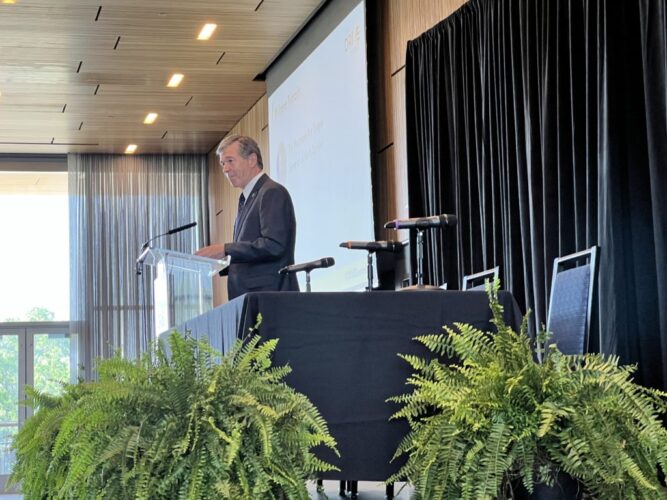
Cooper established the DRIVE Task Force through an executive order on Dec. 9, 2019. The task force officially launched that month with the first DRIVE summit, where 300 attendees came together at N.C. State University to generate ideas and inspire conversation.
“You could feel the momentum in the room,” Cooper said. “It was very exciting. Three months later, COVID hits. Did it stop this task force? It did not.”
The task force continued meeting virtually to build a set of recommendations, which it published in January 2021. Then, it simultaneously worked on promoting those recommendations and developing a set of action steps for implementing them.
The action plan includes things like investing in teacher cadet and grow-your-own-teacher programs; establishing professional communities for teachers to help them cope with the elevated demands of being teachers of color; and creating databases to track progress toward diversifying the teacher workforce.
Summit attendees heard about a “program highlight” for each.
The Diverse and Resilient Educators Advised through Mentorship (DREAM) program is a partnership between Durham Public Schools and UNC-Chapel Hill. It recruits high school students, aiming for 10 a year, who will receive support in pursuing an education degree, mentorship as beginning teachers, and professional development to become teacher leaders.
Attendees heard about the Educators of Color Network spearheaded by the Watson College of Education’s Professional Development System (PDS) at UNC-Wilmington. Watson’s PDS historically served a footprint of 13 counties, but its Educators of Color Network has expanded to 25 districts.
TeachNC also presented to talk about its efforts to provide a single source of information for anyone interested in becoming a teacher. TeachNC began as a project by BEST NC and now sits as its own initiative in the Department of Public Instruction. It has helped about 2,000 people become teachers.
TeachNC doesn’t market itself specifically to communities of color, but 50% of those it has served are aspiring educators of color. Brenda Berg, the executive director of BEST NC, said it’s not anything they added to the project that reached communities of color – it’s what they removed. Barriers to teaching — misinformation, fear, and money — are elevated for communities of color.
Educators wonder how it will all work out
The action plan’s focus on recruiting future teachers begins with attention to middle school students, which educators liked. They also liked that there is an emphasis on affinity groups and professional communities for educators of color. There was a lot they liked, actually. But there was also a plaguing question.
Does the plan go far enough to deal with some of the roots of the problem?
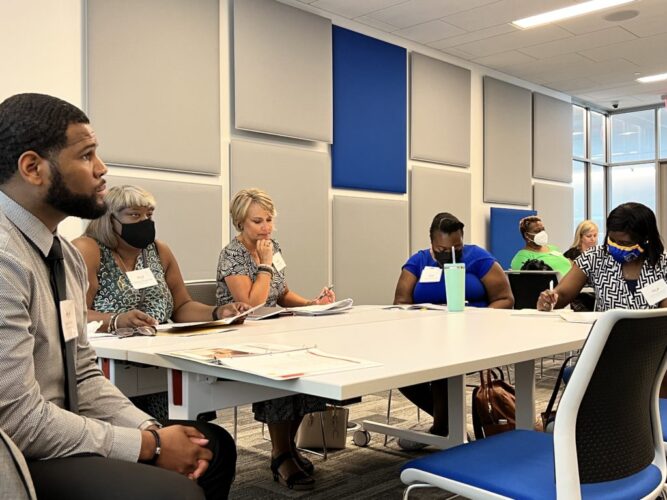
For example, the DRIVE plan recommends actions aimed at recruitment, retention, and support for educators of color. But what about the rest of the education ecosystem?
Jamie Butler-Chidozie is the associate vice chancellor for diversity, equity, and inclusion at the North Carolina School of Science and Mathematics in Durham. She pointed to statistics presented earlier that day showing about half of teachers of color leave their school within the first five years because of increased demands.
“Who is staying and shaping the culture?” she said. “It’s those who are left behind. So part of it is addressing that leadership – to be able to make decisions, to be able to take risks, to be able to think about things in a different way to to bring down some of these barriers.”
White educators need to show up for that work, educators said on Friday. After all, teachers of color have enough on their plates — as Cooper said during his opening keynote for the summit.
“As I read this report, what I was not as familiar with and which really opened my eyes were the special challenges that teachers of color face in the classroom,” Cooper said.
Morgan Crawford, a former middle school teacher, urged white people like herself to take initiative on the DRIVE goals rather than sit back and wait for educators of color to lead efforts.
“On the panel today, you heard people say that teachers of color are overtasked to be the person who does all this, who speaks up for it,” she said. “It’s not your job alone. This is a whole community issue.”
Who is the whole community?
There are two communities at issue, really. One that wants to address the historical mass sacking of teachers of color, and another that isn’t invested in revisiting the past. It’s the latter community who worried educators in the room on Friday.
“You’re trying to take this whole state somewhere that all members of the state don’t want to go,” said Jasmine Hill, an educator in Harnett County Schools. “I know discussing this at a boardroom in my district and a boardroom in Durham will look totally different.”
Nichole Richardson Ijames, principal of Challenger Early College High School in Catawba County, for example, pointed out that confederate flags fly in each of the four corners of her county. That makes it hard to woo and retain educators of color in the district.
It’s harder to confront issues like these right now, teachers said. Some educators fear for their safety — and beyond that, they don’t sense a welcoming or willing climate right now.
“One of the things that we saw emerge prior to the pandemic and during that first year was companies, school district officials, leaders were moving on a track for more equity work, more inclusion work, more diversity work,” said Tamika Walker Kelly, an elementary music teacher who serves as president of the North Carolina Association of Educators. “And when you see progress, there’s always a backlash. And right now we’re in the middle of a backlash.”
That “backlash” these educators referenced includes proposed legislation over the past couple years attempting to restrict what and how teachers teach, particularly around issues of race and gender identity. It also includes book-ban attempts and allegations of teachers undertaking critical race analyses in elementary schools.
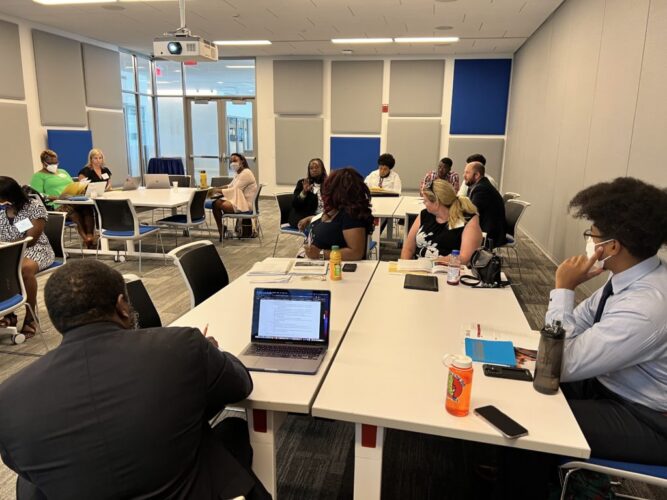
Lisa Godwin, the 2017 North Carolina Teacher of the Year, has felt some of the backlash – even as a white teacher. She remembers speaking to a group about how she teaches through a technicolor lens because children need to see the beauty all around them and that beauty comes from diversity. A legislator listening pushed back, saying lenses distort.
“Lenses also correct,” she responded. “It depends on the prescription. My prescription is to introduce children to the world, not just a limited section.”
A few days later, she got a call from a legislator in her district saying they heard there was a teacher in Onslow County teaching critical race theory.
“I have a label on me now,” she said, “because I stood up for what was right.”
Educators wonder how many will stand up for what is right. The DRIVE Task Force is in its third year and has worked tirelessly to proffer recommendations and propose action steps. What will happen now? Will the work continue — backlash or not?
“We, collectively, are the decisive element,” Graham said as he brought the summit to a close. “You, individually, are the decisive element. What are you doing as that decisive element?”
Watch Gov. Cooper’s keynote and highlights from a student panel at the DRIVE Task Force:
This article first appeared on EducationNC and is republished here under a Creative Commons license.
Get stories like these delivered straight to your inbox. Sign up for The 74 Newsletter

;)